Annie in Ocala comments on my previous post about the Florida Citrus Center and their calamondin oranges:
“I love calamondins! Pretty near always had one (now at 60 that’s saying something) last one was a dwarf in a pot for a dozen years or so but now happily growing in the ground for 20+ years at my home. Just something about the taste, and anything a lemon works for, a calamondin works better!”
I agree. It’s truly an underutilized citrus.
We have two calamondins on the front porch now.
First, the tiny one I got from The Florida Citrus Center:
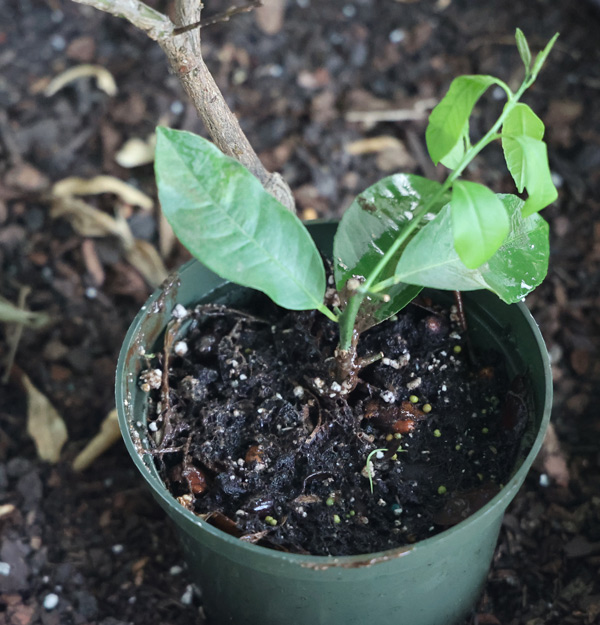
It came in a box like this:
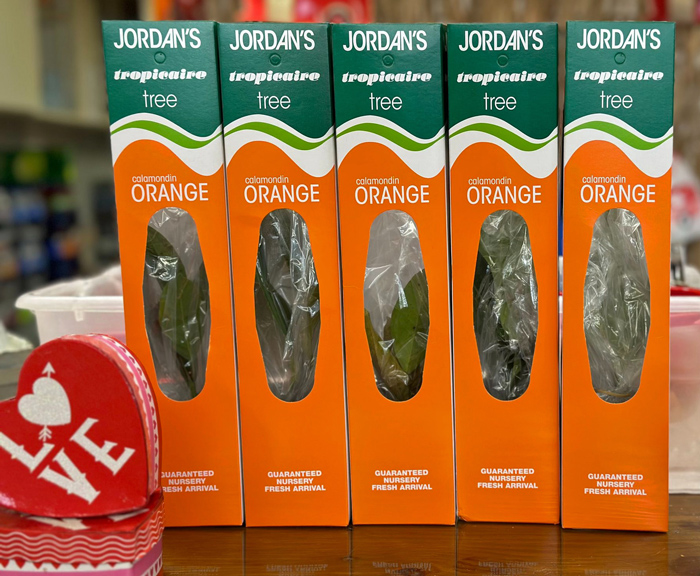
As soon as it was potted, it started growing new leaves.
It looks a bit wilted today, which is likely because of how cold it is outside. I think it will do great if I can keep it from freezing.
As calamondin trees get older and bigger, they gain cold tolerance.
As Linda Clemens at IFAS writes:
“Calamondin trees are suitable for outside planting in USDA zones 8A to 10B. Cold hardy to 20° F when mature, a young tree needs winter protection for the first 2 to 3 years. My trees have experienced temperatures down to 25 °F with some leaf damage and loss of fruit, but recovered completely by summer. In colder climates, the calamondin is a popular container tree.”
The cold tolerance of fruit trees can be overwhelmed when the weather is balmy and warm, followed by brutal cold, as we sometimes get here in Alabama and along the center ridge of Florida, so don’t trust that your tree is going to live and be just fine in all years, just because it can be grown in “Zone 8a.”
Calamondins are known to root from cuttings, so if you have a friend with a tree, you can start one of your own.
The tree I got looks like it was just a little rooted cutting.
I haven’t started my own calamondins from cuttings, though I have started lemon cuttings on a windowsill, so it makes sense. I also own a kumquat that a local man started from a cutting.
Using the mini-greenhouse propagation method worked for us.
And here’s an interesting note from Aggie Horticulture:
“The flowers are self-fertile and require no cross-pollination. A seedling tree will produce a crop of fruit at the age of two years and will continue to bear nearly year round. Trees can be forced to make a flush of growth and bloom by simply withholding all water until the leaves become wilted and roll up, then thoroughly watering the plants—-the calamondins will be in full bloom within two months. “
Interesting. I didn’t realize you could induce a bloom cycle that way.
As for the uses of calamondin, it makes amazing marmalade.
It also makes very good whiskey sours:
I miss my big calamondin trees in the old food forest.
Here is our second tree, also in a pot, this one variegated.
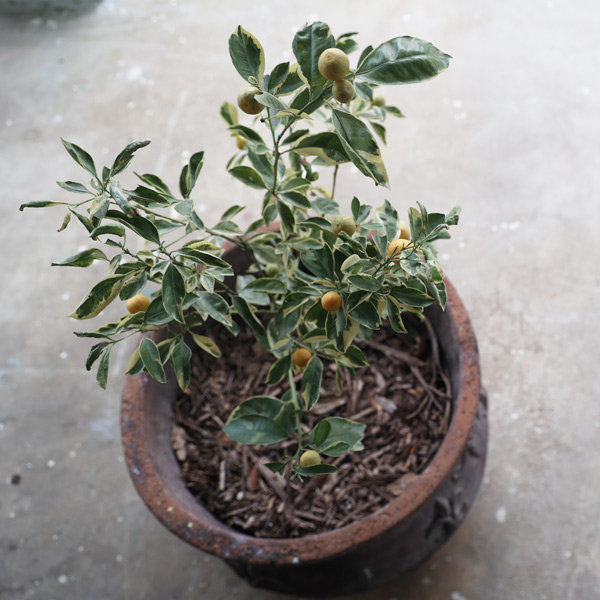
I got this tree from Sam Singleton at Scrubland Farmz Nursery.
It’s quite pretty, though I don’t think it will be as productive as a non-variegated type. The fruit are smaller, but still have that incredible explosive calamondin sourness.
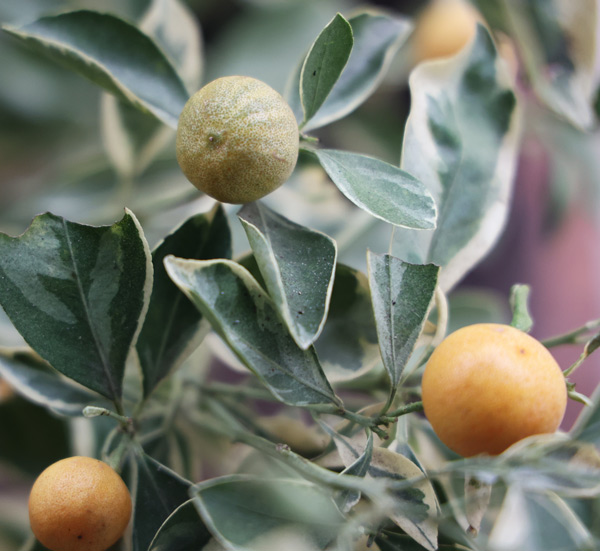
Calamondin trees don’t take up much space and produce almost year-round. If you have a few square feet of unused yard, or a big pot on your porch, you can grow a calamondin.
Think of them as a great condiment tree and you’ll be on the right track. They’re not sweet, but they are beautiful and useful in cooking, cocktails and preserves.

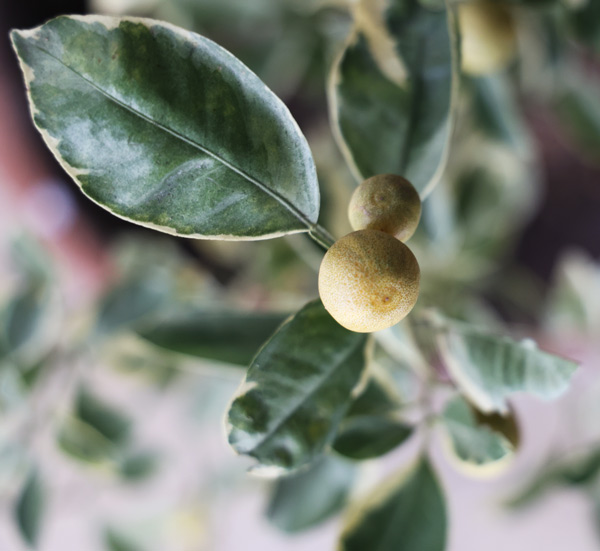
7 comments
Great post, and good job getting the word out! So easy to grow once established. I planted a Meyer lemon when we bought this place 23 years ago, but it couldn’t deal with the amount of shade that these live oaks have grown to provide and succumb a couple years ago. In its first dozen years it produced a couple dozen lemons a year. But as the oaks grew the Meyer lemon produced less, and like 1 bitter lemon a year before it gave up. No so with the calamondin, its taken the shade in stride and I get a coup!e hundred fruits per flush.
That’s really cool. I should plant some in the shady parts of our yard. The added benefit is it’ll handle more cold there.
I just got a calamondin a few weeks ago, then see that you’re posting about them. I am looking forward to getting some fruit, and propagating it. Self-rooting them on their own cuttings will work, but they are much less disease-resistant than sour/seville orange roots or trifoliate (or trifoliate hybrid) roots. It’s very easy to keep a trifoliate orange tree growing (soon enough your problem will be keeping it from growing too much) and rooting/grafting cuttings for citrus is also pretty easy and very accessible with your mini-greenhouse method.
“Trees can be forced to make a flush of growth and bloom by simply withholding all water until the leaves become wilted and roll up, then thoroughly watering the plants”
… I wonder if that would work for other citrus trees…
Could you please tell me where to buy calamondin oranges. I want the oranges, not the tree.
I don’t think I’ve ever seen them for sale.
I just saw a video about these on Vintage food farm on YT and a quick google search led me to your article! Do these suffer from greening? I’d love a lemon/lime juice alternative that doesn’t succumb to greening. Both my lemon and lime trees died and I have a tangelo that is trying to stay alive but isn’t really growing either.
Comments are closed.